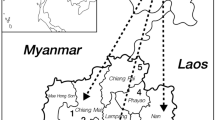Abstract
Two polymorphisms, one in the liver-type pyruvate kinase gene (PKLR) and one in the glucocerebrosidase gene (GBA), both of which are on band q21 of chromosome 1, were found to be tightly linked. Each of three Gaucher disease mutations in 112 chromosomes studied was associated with a unique haplotype. With a conservative assumption about the length of time that the Gaucher disease mutation has been present in the Jewish population, we deduce that the genetic distance between these two loci is probably under 0.2 centimorgans. Four haplotypes are produced by these polymorphic loci, but two of these are relatively uncommon because the polymorphic sites are in linkage disequilibrium. Nonetheless these markers are potentially useful in the prenatal diagnosis of pyruvate kinase deficiency in families who have at least one affected child and may also be helpful in heterozygote detection in families with Gaucher disease where a specific mutation producing the disease in unknown.
Similar content being viewed by others
References
Baronciani L, Beutler E (1993) Analysis of pyruvate kinase-deficiency mutations that produce nonspherocytic hemolytic anemia. Proc Natl Acad Sci USA 90:4324–4327.
Beutler E (1990) Red blood enzyme disorders. In: Bern MM, Frigoletto FD Jr (eds) Hematologic disorders in maternal-fetal medicine. Wiley-Liss, New York; pp 199–212.
Beutler E, West C, Gelbart T (1992) Polymorphisms in the human glucocerebrosidase gene. Genomics 12:795–800.
Collins A, Keats BJ, Dracopoli N, Shields DC, Morton NE (1992) Integration of gene maps: chromosome 1. Proc Natl Acad Sci USA 89:4598–4602.
Kanno H, Fujii H, Hirono A, Miwa S (1991) cDNA cloning of human R-type pyruvate kinase and identification of a single amino acid substitution (Thr384→Met) affecting enzymatic stability in a pyruvate kinase variant (PK Tokyo) associated with hereditary hemolytic anemia. Proc Natl Acad Sci USA 88:8218–8221.
Kanno H, Fujii H, Hirono A, Omine M, Miwa S (1992) Identical point mutations of the R-type pyruvate kinase (PK) cDNA found in unrelated PK variants associated with hereditary hemolytic anemia. Blood 79:1347–1350.
Maniatis T, Fritsch EF, Sambrook J (1982) Molecular cloning: a laboratory manual. Cold Spring Harbor Laboratory, Cold Spring Harbor, NY.
Masuno M, Orii T, Sukegawa K, Taga T (1989) Restriction fragment length polymorphism analysis in healthy Japanese individuals and Japanese families with Gaucher disease. Acta Paediatr Jpn 31:158–162.
Neubauer B, Lakomek M, Winkler H, Parke M, Hofferbert S, Schröter W (1991) Point mutations in the L-type pyruvate kinase gene of two children with hemolytic anemia caused by pyruvate kinase deficiency. Blood 77:1871–1875.
Satoh H, Tani K, Yoshida MC, Sasaki M, Miwa S, Fujii H (1988) The human liver-type pyruvate kinase (PKL) gene is on chromosome 1 at band q21. Cytogenet Cell Genet 47:132–133.
Zimran A, Gelbart T, Beutler E (1990) Linkage of the PvuII polymorphism with the common Jewish mutation for Gaucher disease. Am J Hum Genet 46:902–905.
Author information
Authors and Affiliations
Rights and permissions
About this article
Cite this article
Glenn, D., Gelbart, T. & Beutler, E. Tight linkage of pyruvate kinase (PKLR) and glucocerebrosidase (GBA) genes. Hum Genet 93, 635–638 (1994). https://doi.org/10.1007/BF00201562
Received:
Revised:
Issue Date:
DOI: https://doi.org/10.1007/BF00201562




